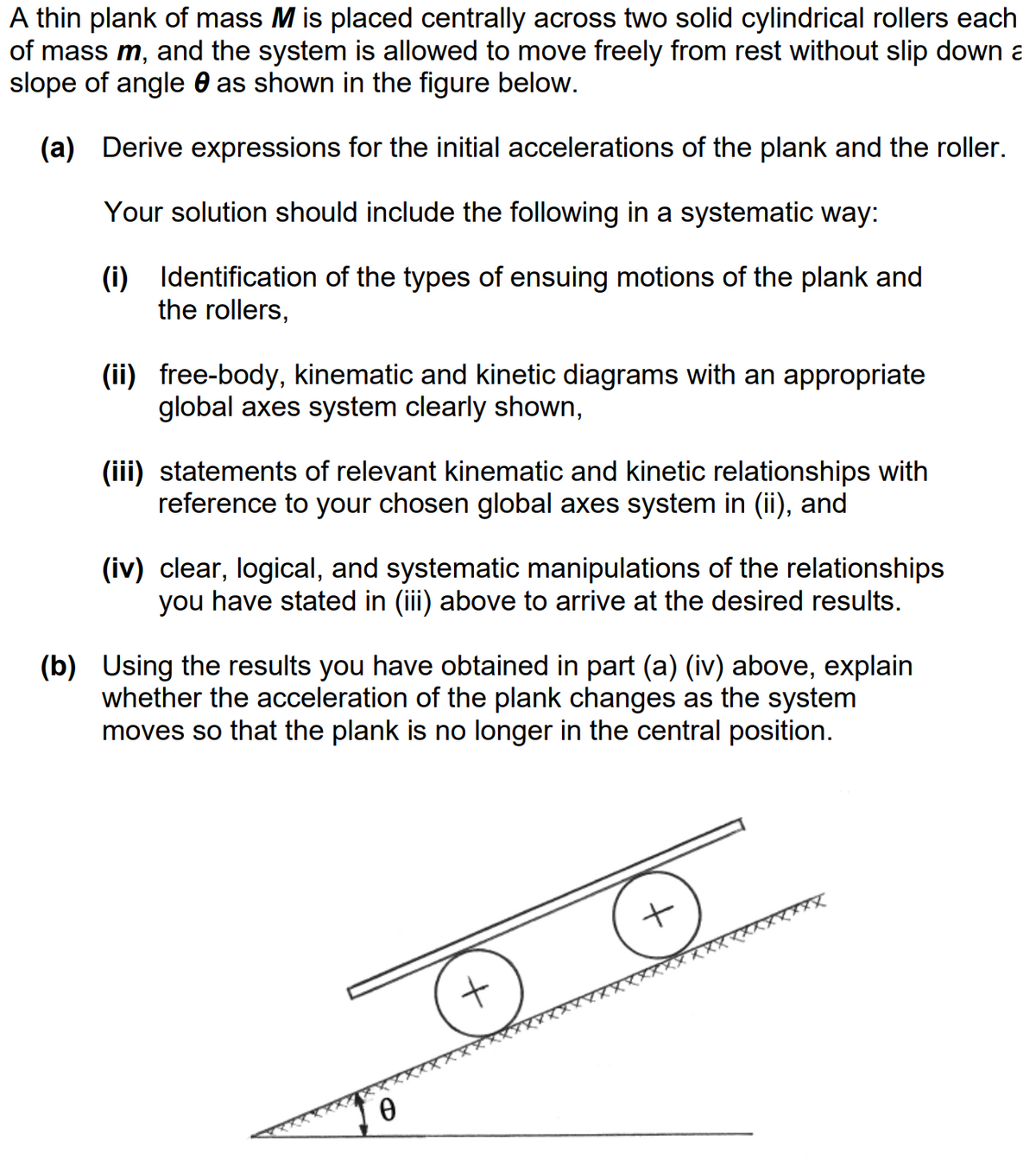f mass m, and the system is allowed to move freely from rest without ope of angle as shown in the figure below. (a) Derive expressions for the initial accelerations of the plank and Your solution should include the following in a systematic way: (i) Identification of the types of ensuing motions of the plank the rollers, (ii) free-body, kinematic and kinetic diagrams with an appropr global axes system clearly shown, (iii) statements of relevant kinematic and kinetic relationships roforonco to your obocon global ovos svetom in (ii) and
f mass m, and the system is allowed to move freely from rest without ope of angle as shown in the figure below. (a) Derive expressions for the initial accelerations of the plank and Your solution should include the following in a systematic way: (i) Identification of the types of ensuing motions of the plank the rollers, (ii) free-body, kinematic and kinetic diagrams with an appropr global axes system clearly shown, (iii) statements of relevant kinematic and kinetic relationships roforonco to your obocon global ovos svetom in (ii) and
Related questions
Question

Transcribed Image Text:A thin plank of mass M is placed centrally across two solid cylindrical rollers each
of mass m, and the system is allowed to move freely from rest without slip down a
slope of angle as shown in the figure below.
(a) Derive expressions for the initial accelerations of the plank and the roller.
Your solution should include the following in a systematic way:
(i) Identification of the types of ensuing motions of the plank and
the rollers,
(ii) free-body, kinematic and kinetic diagrams with an appropriate
global axes system clearly shown,
(iii) statements of relevant kinematic and kinetic relationships with
reference to your chosen global axes system in (ii), and
(iv) clear, logical, and systematic manipulations of the relationships
you have stated in (iii) above to arrive at the desired results.
(b) Using the results you have obtained in part (a) (iv) above, explain
whether the acceleration of the pla changes as the system
moves so that the plank is no longer in the central position.
+
+
Expert Solution
This question has been solved!
Explore an expertly crafted, step-by-step solution for a thorough understanding of key concepts.
Step by step
Solved in 2 steps with 2 images
